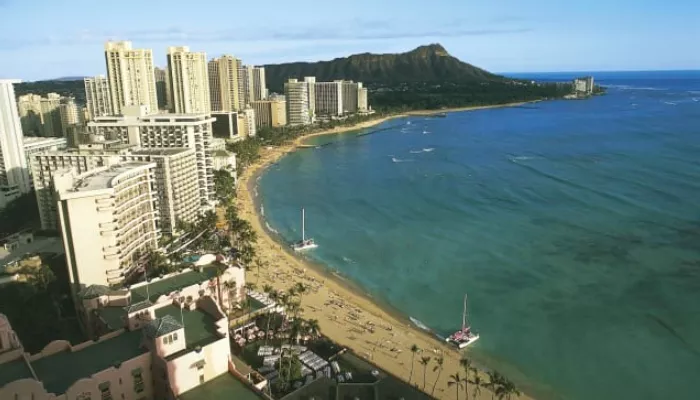A recent study by the University of Hawaii reveals that parts of the Hawaiian Islands are sinking into the ocean, and in some areas, it’s happening much faster than previously predicted. This new research warns that rising sea levels will have a more immediate impact on the islands than expected.
Hawaii’s geological history has been one of growth. Over a million years ago, volcanic activity and tectonic shifts brought the islands from beneath the ocean’s surface. Over time, they became a home to early Polynesian settlers and, much later, the 50th state of the United States. Today, they’re known for their culture and iconic surf spots.
However, the latest findings suggest the islands are now sinking back into the ocean. According to Kyle Murray, lead author of the study and researcher at the Climate Resilience Collaborative (CRC) at UH Mānoa, the problem of subsidence—land sinking—is often overlooked in flood risk assessments. He explained, “In areas where subsidence is occurring rapidly, the effects of sea level rise will be felt much sooner than we had anticipated, meaning we must prepare for flooding on a much shorter timeline.”
The study shows that the rate of sinking on Oahu, the third-largest Hawaiian island, averages at a modest 0.6 millimeters per year—about the thickness of a sheet of printer paper. However, certain areas of the island are experiencing sinking rates up to 40 times higher. Some regions of Oahu are sinking by more than 40 millimeters annually, a startling discovery for the researchers.
Phil Thompson, co-author of the study and director of the UH Sea Level Center, noted that in some places, like the Mapunapuna industrial area, subsidence could increase flood exposure by over 50% by 2050. In addition, the study suggests that flood preparedness timelines could be compressed by as much as 50 years in certain parts of the island.
Given these findings, experts emphasize the importance of using this data to prepare for the coming challenges. Chip Fletcher, another co-author and director of CRC, highlighted the practical benefits of the study, stating, “Our research provides critical data that can inform state and county decision-making, helping to improve flood exposure assessments, infrastructure resilience, and long-term urban planning.”
The study’s goal is to ensure that Hawaii’s urban planning and flood preparedness strategies are grounded in the best available science, safeguarding the island’s residents, businesses, and cultural landmarks.
While the future remains uncertain, the research offers a crucial step in understanding how Hawaii’s geological changes could impact its residents in the coming decades. The hope is that, unlike the mythical lost city of Atlantis, Hawaii’s fate won’t be sealed by rising waters.

